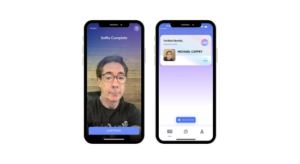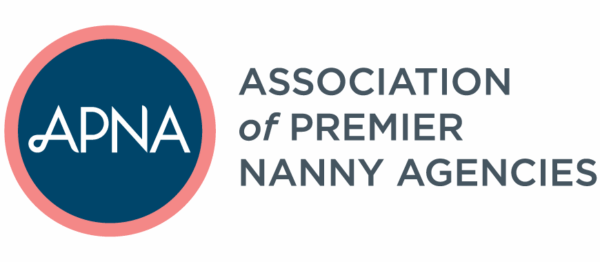In the high-trust world of in-home childcare, knowing exactly who you’re welcoming into a family’s home isn’t just good business—it’s an absolute necessity.
As identity fraud rates continue to climb and technology makes deception increasingly sophisticated, nanny agencies face mounting pressure to ensure the individuals they place with families are exactly who they claim to be. 
Biometric identity verification is rapidly becoming the gold standard in caregiver screening, offering a level of certainty that traditional verification methods simply cannot match.
The Growing Identity Verification Challenge
Traditional identity verification methods rely heavily on manual document checks and self-reported information. However, these approaches have significant vulnerabilities in today’s digital landscape.
According to recent statistics, fraud rates among job candidates exceed 7%, and identity theft cases have doubled over the past five years. For nanny agencies, even a single instance of identity fraud could be catastrophic—both for a family’s safety and the agency’s reputation.
The stakes are particularly high when placing caregivers who will have unsupervised access to children, homes, and valuables. Parents rightfully expect agencies to have verified every aspect of a caregiver’s background, beginning with their basic identity.
Yet inaccurate data remains the leading cause of background check delays, with 22% of employers reporting lost candidates due to these delays.
How Biometric Verification Works
Biometric identity verification addresses these vulnerabilities through a sophisticated multi-step process that’s remarkably simple for candidates to complete.
The process typically works as follows:
- The candidate takes a selfie using their smartphone camera
- The system performs liveness detection to ensure they’re a real person (not a photo or deepfake)
- The candidate scans their government-issued ID
- Advanced algorithms compare the selfie to the ID photo and verify document authenticity
- The system automatically extracts and verifies the personal information from the ID
This entire process takes approximately two minutes and eliminates the manual data entry that often introduces errors into background screening.
The result is a biometrically confirmed identity with automatically captured, verified personal data—establishing a foundation of truth from the very beginning of the screening process.
Benefits for Nanny Agencies
For nanny agencies specifically, biometric identity verification delivers several compelling advantages:
- Enhanced Safety: By confirming a candidate is precisely who they claim to be, agencies add a crucial layer of protection for client families. Verification technology can detect sophisticated fraud attempts, including tampered documents, counterfeit IDs, and identity impersonation.
- Faster Placement Times: With automated data capture from verified government IDs, agencies eliminate delays caused by manual errors or fraudulent information. Background checks proceed without the common holdups that frustrate both agencies and potential hires.
- Competitive Advantage: Agencies that employ advanced identity verification can differentiate themselves in a crowded marketplace. For parents selecting between multiple placement services, knowing an agency uses biometric verification rather than basic document checks provides meaningful peace of mind.
- Reduced Liability: By implementing the most advanced identity verification technology available, agencies demonstrate due diligence in their screening process, potentially reducing liability exposure in the event something does go wrong.
- Streamlined Candidate Experience: Despite the sophisticated technology involved, the verification process is remarkably user-friendly. Candidates appreciate the quick, straightforward process that eliminates tedious form-filling and can be completed from any smartphone.
Real-World Impact
The importance of identity verification becomes clear when considering real-world scenarios. Take, for instance, the case of agencies working with international nannies, where documentation may vary significantly by country and be more difficult to verify through traditional means. Biometric verification provides a standardized, technology-driven approach that works across borders.
Or consider the increasingly common problem of synthetic identity fraud, where criminals combine real and fabricated information to create entirely new, fictional identities.
Traditional document checks may miss these sophisticated fraud attempts, but biometric verification adds the critical human element that can’t be easily falsified.
The Future of Caregiver Screening
As technology continues to evolve, biometric verification is likely to become the minimum standard for high-trust positions like in-home childcare. Parents increasingly expect agencies to employ every available tool to ensure their children’s safety, and biometric verification represents the current gold standard in identity confirmation.
For nanny agencies looking to remain competitive while prioritizing family safety, implementing biometric identity verification isn’t just a technological upgrade—it’s an essential investment in trust.
By starting the screening process with verified truth, agencies can build more confident relationships with both caregivers and the families who depend on their judgment.
In an industry where trust is the ultimate currency, biometric identity verification offers something invaluable: certainty that caregivers are exactly who they say they are, from the very first interaction.
Mike Coffey, SPHR, SHRM-SCP is an entrepreneur, licensed private investigator, HR consultant, and registered yoga teacher. He is also president of Imperative, a background investigations and due diligence firm. He is also the State Director-Elect for Texas SHRM. And each week, he hosts the Good Morning, HR podcast.

